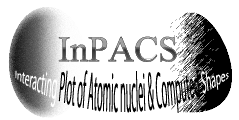集中講義 (2017.11.6-8):Andrea Vitturi氏(Padova大)
2017年8月22日 | 新着情報
今年度、イタリア・パドバ大学のAndrea Vitturi氏による集中講義を筑波大学・計算科学研究センターにおいて予定しています。
Lecturer: Prof. Andrea Vitturi (University of Padova)
Title: Interplay of nuclear structure and reaction mechanism in the description of heavy-ion collisions
Date/Time: November 6-8, 2017; 10:00 – 17:00
Place: Conference Room A, Center for Computational Sciences, University of Tsukuba
Abstract: I will discuss the main features of direct reactions induced by heavy ions, with particular focus on nuclear structure inputs (and outputs). Heavy-ion reactions offer a large variety of final channels (elastic, inelastic, transfer, break-up, fusion, knock-out, charge-exchange, etc) that, coupled to a proper choice of the kinematical conditions as scattering angle or bombarding energy, can single-out specific aspects and properties (static and dynamic) of the nuclear systems. In addition, the usual scenario gets novel features in the case of reactions involving weakly bound nuclei. In fact, the peculiar extension of the nuclear density and the close vicinity of the continuum threshold require novel formalisms for the description of the reaction mechanisms, in parallel with the necessity of revising current structure models.
A list of arguments is as follows:
-
Basics in heavy-ion reactions. Semi-classical approximation and coupled-channels
-
Elastic scattering. Optical model. The case of weakly bound nuclei
-
Coulomb excitation. One-step and multistep reactions.
-
Nuclear inelastic excitations. Single-particle and collective excitations. Excitation of giant resonances
-
Dipole excitations with isoscalar and isovector probes. GDR and PDR
-
Breakup reactions and continuum discretization
-
Interplay of different channels: reactions in one dimension as toy model
-
Subbarrier fusion. Coupling to internal degrees of freedom. The case of weakly bound nuclei.
-
Algebraic approaches (IBM, IBMF, …..). Discrete symmetries and alpha clustering
-
Phase transitions and critical point symmetries in even and odd nuclei
-
Two-particle transfer
-
Two-particle transfer (cont). Giant pairing vibration. Competition of T=0 and T=1 pairs.

